
A science fair board template is a structured format designed to help students organize and present their research projects effectively. These templates, often available as PDFs, provide a clear layout for sections like the abstract, hypothesis, materials, data, and conclusions. They are a valuable tool for creating a visually appealing and professional display that meets competition standards. By using a template, students can focus on their experiment rather than the design, ensuring a polished presentation.
What is a Science Fair Board?
A science fair board is a visual presentation tool used to showcase scientific projects, experiments, and research findings. Typically, it is a three-panel display board that unfolds to a standard size of 36 inches tall and 48 inches wide. The board is designed to organize information logically, with sections for the abstract, research question, hypothesis, materials, procedures, data, and conclusions. It serves as a central hub for communicating the project’s objectives, methods, and results to judges, peers, and visitors. A well-structured science fair board is essential for effectively conveying complex ideas in a clear, concise, and visually appealing manner, making it a cornerstone of science fair competitions.
Importance of Using a Template for Science Fair Boards
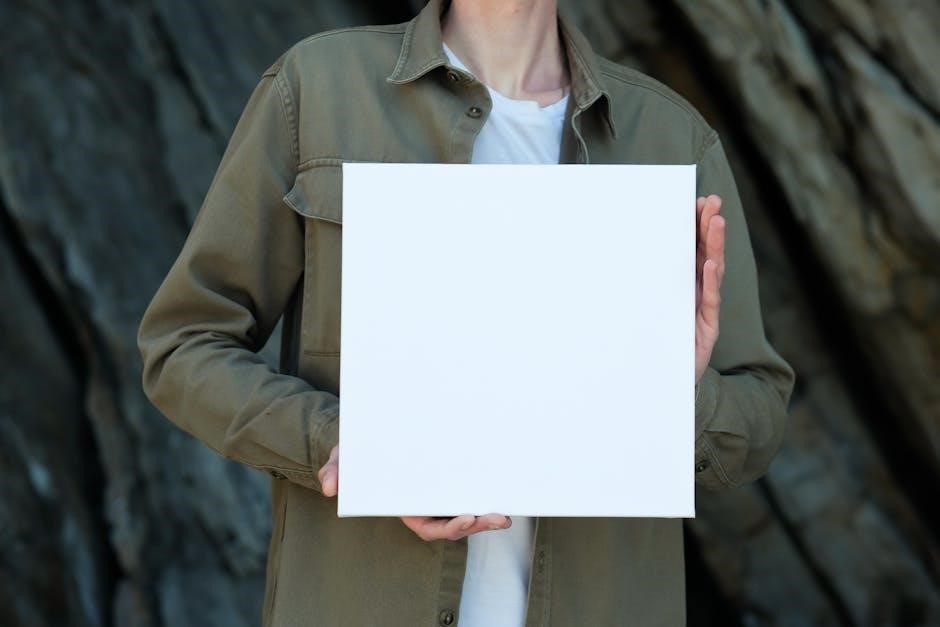
Using a template for a science fair board is essential for creating a professional and organized presentation. Templates provide a structured format, ensuring all key sections are included and properly arranged. They save time by eliminating the need to design a layout from scratch, allowing students to focus on their experiment’s content rather than the board’s aesthetics. Templates also help maintain consistency and clarity, making it easier for judges and viewers to follow the project’s progression. Additionally, they guide students in adhering to competition guidelines, such as size and content requirements, which is crucial for a polished and compliant presentation. This ensures the project is presented in its best possible form, enhancing its overall impact and professionalism.
Where to Find Science Fair Board Templates
Science fair board templates are widely available online, offering convenient and accessible options for students. Popular platforms like Creately and PosterSmith provide customizable templates designed to meet competition standards. Educational websites and blogs often share free downloadable templates in PDF format, catering to various project needs. Additionally, retailers like Amazon offer pre-made display boards that can be tailored to specific experiments. These templates are structured to include essential sections, ensuring a professional and organized presentation. They also save time, as they eliminate the need to design a layout from scratch; With so many resources available, students can easily find a template that aligns with their project requirements and preferences.

Key Elements of a Science Fair Board
Abstract
Research Question and Hypothesis
The research question is the central inquiry driving your science fair project, while the hypothesis is your educated guess about the outcome. A good research question should be clear, specific, and testable, guiding the entire investigation. For example, “How does the pH level of soil affect plant growth?” The hypothesis, based on prior knowledge, predicts the relationship between variables. It should be stated clearly, such as, “Plants grown in neutral soil will show healthier growth compared to those in acidic or basic soil.” Together, these elements form the foundation of your experiment, ensuring focus and direction. They are essential for a structured and meaningful project.
Variables (Independent, Dependent, Controlled)
In a science fair project, variables are crucial elements that define the experiment. The independent variable is the factor you manipulate or change, such as the amount of light exposure. The dependent variable is the outcome measured, like plant growth. Controlled variables are factors kept constant to ensure a fair test, such as soil type or water quantity. Clearly identifying and defining these variables is essential for a valid experiment. They help establish cause-and-effect relationships and ensure the results are accurate. Properly labeling and explaining each variable on your science fair board clarifies your methodology and demonstrates a strong understanding of the scientific method. This section is vital for showcasing the integrity of your research.
Background Research
Background research provides the foundation for your science fair project by gathering and analyzing existing knowledge on your topic. It involves reviewing credible sources such as books, scientific articles, and reputable websites to understand the subject deeply. This section helps you identify key concepts, theories, and previous findings related to your research question. Including background research on your science fair board demonstrates your understanding of the topic and shows how your project fits into the broader scientific context. It also supports your hypothesis and explains the significance of your experiment. Well-organized background research can be presented in a dedicated section of your board, ensuring clarity and coherence for judges and viewers.
Materials and Procedure
The Materials and Procedure section details the tools and steps used to conduct your experiment. It should list all materials clearly, ensuring anyone can replicate your work. The procedure should be a step-by-step explanation of how you gathered data, ensuring accuracy and reproducibility. This section is crucial for judges to assess the scientific rigor of your project. Use bullet points or numbered lists for clarity, and include diagrams if they enhance understanding. Properly documenting materials and procedures shows meticulous planning and adherence to the scientific method, making your project more credible and professional.
Data and Results
The Data and Results section showcases the findings of your experiment, presenting them in a clear and organized manner. Use charts, graphs, and tables to visually represent your data, making it easier for judges and viewers to understand. Summarize key trends and patterns without interpreting the data here. Include raw data if necessary, but ensure it is concise and relevant. The results should directly relate to your hypothesis, providing evidence to support or refute it. Avoid clutter by focusing on the most critical data points. Proper labeling and clear visuals are essential for this section to effectively communicate your findings and their significance to your research question.
The conclusion is the final summary of your experiment’s outcomes, stating whether your hypothesis was supported and discussing broader implications. Keep it concise, focusing on main results without repeating details from other sections. Reflect on what was learned and its contribution to the field. Use bullet points or short paragraphs for clarity. Ensure the conclusion is well-organized and visually appealing, leaving a strong impression of the research’s significance. Discuss potential future applications or how the findings could be used in real-world scenarios. Make sure it logically follows from the data presented, highlighting the importance and value of your findings.

Structure of a Science Fair Display Board
A science fair display board is structured to guide viewers through your project, with sections like abstract, hypothesis, data, and conclusion. Use a PDF template to organize these elements effectively and ensure a professional presentation.
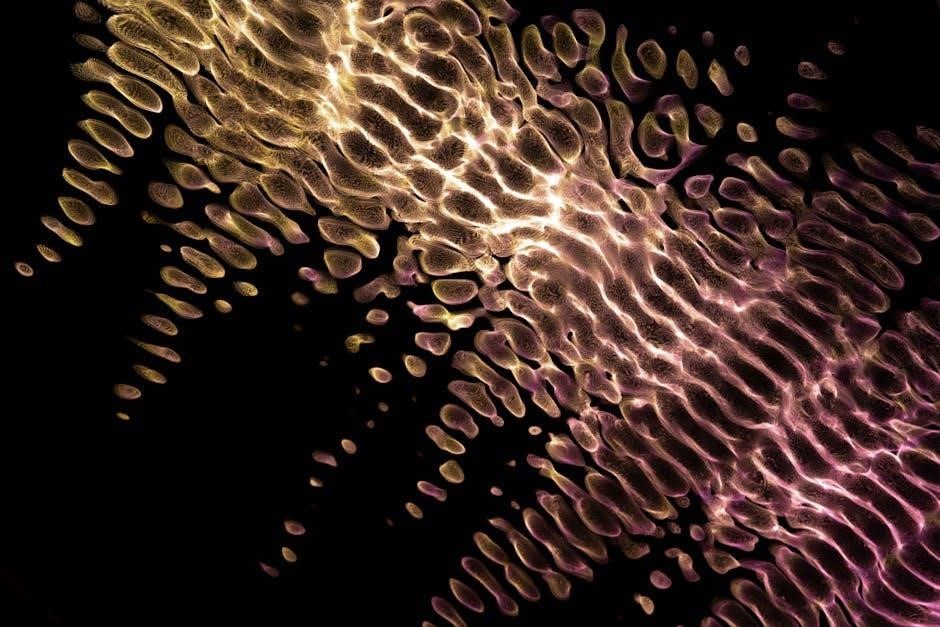
Layout and Design Principles
When designing a science fair display board, the layout and design principles are crucial for ensuring clarity and visual appeal. Start by organizing your content into clear sections, such as the abstract, research question, and results, using headers to guide viewers. Balance text with visuals like charts, graphs, and images to avoid overcrowding. Use a consistent color scheme that aligns with your project’s theme, ensuring readability. White space is essential to prevent clutter and focus attention on key information. Choose a clean, legible font for text and larger, bold fonts for headings. Finally, ensure your design flows logically, leading the viewer through your project from start to conclusion.
Color Scheme and Visual Appeal
The color scheme and visual appeal of a science fair board play a significant role in capturing attention and conveying information effectively. Choose a palette of 2-3 complementary colors that align with your project’s theme, ensuring readability and visual harmony. Avoid overly bright or clashing colors, as they can distract from the content. Use high-quality images, charts, and diagrams to illustrate key points, making data easier to understand. Minimize clutter by balancing text with white space and decorative elements. Highlight important sections with bold fonts or contrasting colors to draw focus. A well-designed board not only looks professional but also enhances the overall presentation, making it more engaging for judges and viewers alike. Keep the design clean and polished to ensure your project stands out.
Typography and Readability
Typography and readability are essential for ensuring your science fair board is easy to understand and professional. Use clear, legible fonts like Arial, Helvetica, or Times New Roman in sizes between 18-24 points for headings and 12-16 points for body text. Consistency in font style and size throughout the board helps maintain a polished look. Avoid overly decorative fonts that may distract from the content. Proper spacing between lines and paragraphs enhances readability, while bullet points and short sentences make complex information digestible. Ensure headings are bold or highlighted to guide viewers through your project. Avoid small font sizes to maintain visibility from a distance, and use color contrast to make text stand out against the background. A clean, readable design ensures your message is conveyed effectively.
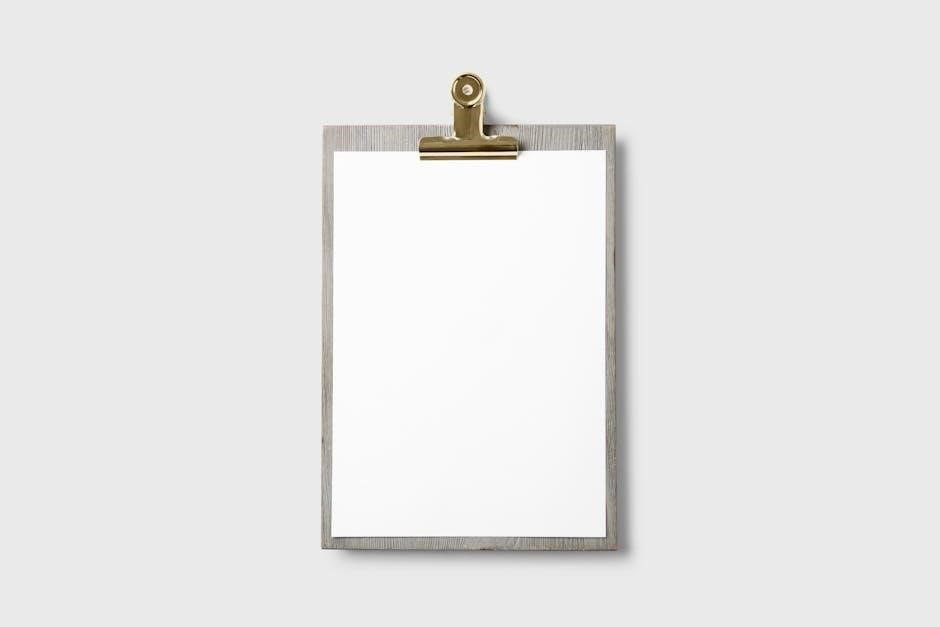
Creating a Science Fair Board
Creating a science fair board involves using templates, planning the layout, gathering materials, and assembling the board to ensure a professional and organized presentation.
Planning the Layout
Planning the layout of your science fair board is crucial for a clear and visually appealing presentation. Start by understanding the structure of your project, ensuring each section has a designated space. Allocate areas for the title, abstract, research question, materials, data, and conclusions. Use a balanced color scheme to enhance readability and visual appeal. Incorporate visuals like graphs or charts to showcase findings effectively. Consider the flow of information, guiding viewers logically through your experiment. Use templates or examples to inspire your design, ensuring compliance with competition guidelines. A well-planned layout ensures your project is professional, organized, and easy to follow.
Gathering Materials
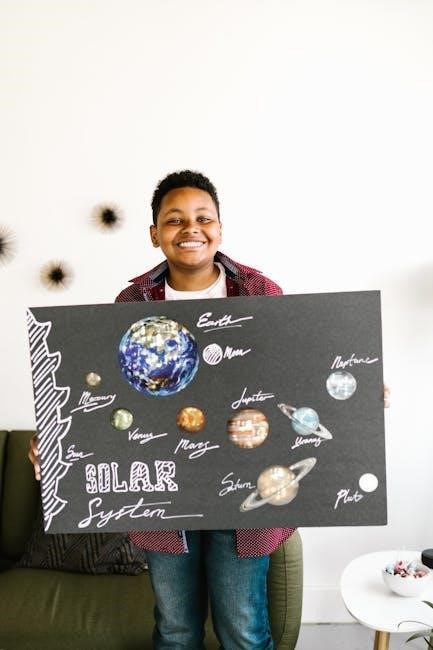
Gathering the right materials is essential for creating an effective science fair board. Start by collecting a sturdy tri-fold or single-board display, along with markers, glue, scissors, and printed copies of your project sections. Ensure you have a color printer for vibrant visuals and charts. Organize your materials in a checklist to avoid missing anything. Include adhesive putty or tape for securing items and a laminator for protecting important documents. Use high-quality paper for printing graphs and photos to maintain a professional appearance. Gather additional supplies like rulers, erasers, and extra ink to ensure you’re prepared for last-minute adjustments. Having all materials ready beforehand saves time and helps you focus on assembling a polished display.
Assembling the Board
Assembling the science fair board requires careful organization and attention to detail. Start by arranging the sections in a logical flow, beginning with the title and abstract at the top. Use adhesive putty or tape to secure printed materials like the research question, hypothesis, and procedures. Place charts, graphs, and photos in visually appealing locations to draw attention. Ensure all text is legible from a distance by using large, clear fonts. Use color markers to highlight key points and create visual interest. Double-check that all elements are aligned properly and the board is balanced. Finally, review the entire display to ensure it tells a clear, cohesive story about your project. A well-assembled board makes your work stand out and easy to understand.
Tips for a Professional Look
To achieve a professional look for your science fair board, start with a clean and organized layout. Use a consistent color scheme that complements your project’s theme, ensuring readability. Choose large, clear fonts for headings and maintain a uniform font style throughout. Incorporate high-quality images, charts, and graphs to visually enhance your data. Avoid clutter by leaving ample white space and using borders or frames to separate sections. Ensure all text is free of errors and easy to read from a distance. Use bold headings and bullet points to highlight key information. Finally, proofread your entire board to ensure accuracy and professionalism in presentation.

Common Mistakes to Avoid
Avoid overcrowding the board with too much text or clutter. Ensure information is visible from a distance and well-organized. Never ignore the scientific method or key sections like the hypothesis and variables. Poor design choices, such as inadequate spacing or inconsistent fonts, can also detract from the professionalism of your project. Always proofread and ensure all visuals are clear and relevant to your research. Failure to follow these guidelines can make your project less effective and harder to understand for judges and viewers.
Overcrowding the Board
Overcrowding is a common mistake that makes a science fair board difficult to read and visually unappealing. Too much text, excessive images, or cluttered sections can overwhelm viewers. Judges and audiences prefer a clean, organized layout that allows key information to stand out; To avoid overcrowding, use concise language, bullet points, and visuals like charts or graphs to present data effectively. Ensure ample white space between sections for better readability. Stick to the essential details and prioritize clarity over quantity. A clutter-free design will make your project more professional and easier to understand, ensuring your hard work is fully appreciated. Templates can help guide you in maintaining a balanced layout.
Poor Visibility of Information
Poor visibility of information on a science fair board can hinder the effectiveness of your presentation. Key issues include small font sizes, low contrast between text and background, and insufficient spacing between sections. To enhance readability, use a font size of at least 24 points for headings and 18 points for body text. Ensure high contrast by selecting dark text on a light background or vice versa. Avoid overcrowding by leaving ample white space and using bullet points for lists. Properly align sections and use visuals sparingly to avoid distractions. Ensure that crucial elements like the abstract and conclusion are easily identifiable. Templates can help maintain a balanced and clear layout, improving overall visibility and professionalism.
Ignoring the Scientific Method
Ignoring the scientific method in a science fair project can lead to a disorganized and unclear presentation. The scientific method provides a structured approach to research, ensuring logical progression from the question to the conclusion. Without it, the project may lack direction, making it difficult for judges to understand the process. Key steps like forming a hypothesis, conducting experiments, and analyzing data may be overlooked, leading to a weaker presentation. A well-designed science fair board template can help incorporate the scientific method by including sections for each step, ensuring clarity and adherence to proper scientific practices. This approach enhances credibility and professionalism, making the project more compelling and easier to evaluate.
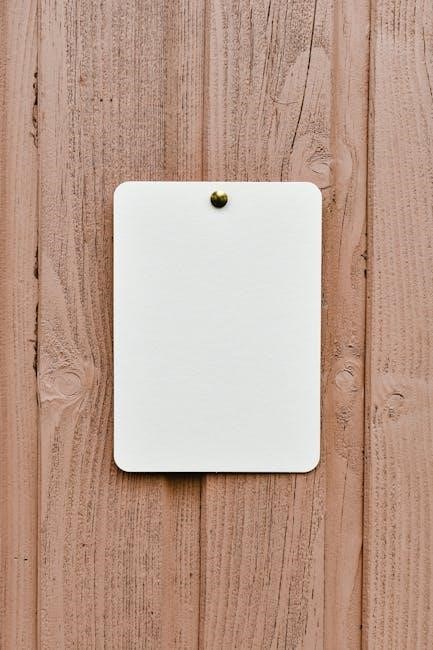
Budget and Resources
Creating a science fair board can be cost-effective with affordable materials like cardboard or foam boards. Free PDF templates are available online to save money. Printing services, such as PosterSmith, offer high-quality options for professional displays. Many retailers, including Staples and Amazon, provide budget-friendly boards and supplies. Utilize these resources to create an impressive presentation without exceeding your budget.
Affordable Materials for the Board
Creating a science fair board doesn’t have to be expensive. Affordable materials like cardboard, foam board, or trifold display boards are widely available. These boards are lightweight, durable, and easy to customize. You can find them at stores like Staples, Amazon, or Walmart for a low cost. Additionally, printing your project details on poster paper or cardstock and attaching them to the board is a budget-friendly option. Many schools and libraries also offer free or discounted materials for science fair projects. Using a PDF template can help you design your board efficiently without spending extra on professional design tools. With creativity, you can create a professional-looking display using inexpensive materials.
Free vs. Paid Templates
When creating a science fair board, choosing between free and paid templates depends on your needs and budget. Free templates, often available as PDFs, provide basic layouts and are ideal for students or educators on a tight budget. They can be downloaded from educational websites, schools, or platforms like Canva. Paid templates, however, offer more customization options, professional designs, and advanced features. These are typically found on marketplaces like Etsy or TemplateMonster. While free templates are a great starting point, paid versions may be worth the investment for a polished, competition-ready display. Consider your project’s complexity and presentation goals when deciding which option suits you best.
Printing and Mounting Options
Printing and mounting your science fair board template PDF requires careful planning to ensure a professional finish. Use high-resolution printers for crisp text and images, and opt for sturdy materials like poster paper or cardstock. Online services like PosterSmith or FedEx Office can handle large-format printing if needed. For mounting, consider foam core or cardboard backers for stability. Laminating the printed template protects it from damage and enhances durability. Mounting clips or adhesive putty can secure the sections to the display board. Ensure all elements are aligned properly for a polished look. These steps help create a visually impressive and long-lasting science fair project display.

Examples and Inspiration
Explore sample science fair board templates in PDF format to visualize your project layout. Platforms like PosterSmith and Canva offer customizable designs, including trifold layouts and sectioned displays, to inspire your presentation and ensure a professional look.
Sample Science Fair Board Templates
Sample science fair board templates in PDF format are widely available online, offering pre-designed layouts for projects. These templates often include sections for the abstract, research question, hypothesis, materials, procedure, data, and conclusions. Many templates feature a trifold design, with separate panels for each section, ensuring a clean and organized presentation. Platforms like PosterSmith, Canva, and Science Fair Fun offer customizable templates that cater to various project needs. These samples provide inspiration and guidance, helping students create a professional and visually appealing display. By using a template, students can focus on their experiment’s content while maintaining a structured and polished format that meets competition standards. These resources are invaluable for ensuring a project stands out and is easily understood by judges and viewers alike.
Winning Project Ideas
Winning science fair projects often focus on innovative and practical ideas that address real-world problems. Examples include exploring renewable energy sources, investigating the effects of climate change, or developing new technologies. Students who create interactive experiments, such as testing the efficiency of solar panels or studying the impact of pH on plant growth, tend to impress judges. Using a science fair board template PDF ensures these ideas are presented clearly and professionally. The best projects balance creativity with scientific rigor, showcasing a clear hypothesis, detailed data, and insightful conclusions. By selecting a topic they are passionate about and using a well-organized template, students can create a compelling and award-winning display that highlights their skills and knowledge.
Success Stories from Previous Fairs
Many students have achieved outstanding results at science fairs by using well-designed templates to showcase their projects. For instance, a project on renewable energy sources won first place by clearly presenting data and visuals in an organized layout. Another student’s experiment on water purification earned recognition for its professional and visually appealing display. These successes highlight the importance of a well-structured board in conveying complex ideas effectively. Judges often praise projects that balance creativity with scientific rigor, making templates an invaluable tool. By following proven designs, students can ensure their work stands out and tells a compelling story, as seen in numerous award-winning examples from past fairs.
Creating a science fair board is manageable with the right tools and templates. Use structured designs to present your information clearly and professionally, ensuring your project shines at the fair.
Creating a successful science fair board requires careful planning and organization. Use a template to ensure a clear and structured layout, making your project easy to follow. Include all essential sections like the abstract, hypothesis, materials, and results. Keep the design visually appealing with a balanced color scheme and readable fonts. Avoid overcrowding by using bullet points and concise language. Ensure all information is visible from a distance and well-organized. Proofread your content for clarity and accuracy. Finally, use high-quality printing and materials to give your board a professional finish. By following these tips, you can create a standout science fair display that effectively communicates your research.
Final Thoughts on Creating a Winning Science Fair Board
Creating a winning science fair board involves careful planning and attention to detail. Start by selecting a suitable PDF template that aligns with your project’s needs, ensuring it includes sections for the abstract, hypothesis, materials, procedure, results, and conclusion. Customize the template to reflect your project’s theme and ensure a logical flow of information. Use clear, concise language and bullet points to avoid clutter. Incorporate visual elements like charts, graphs, and relevant images to enhance understanding and engagement. Choose a consistent color scheme and readable fonts, and ensure the title is bold and attention-grabbing. Print the board on high-quality material and mount it securely. Finally, review your board for accuracy and professionalism before the fair. By following these steps, you can create a standout display that effectively communicates your research and impresses judges and viewers alike.
Leave a Reply
You must be logged in to post a comment.